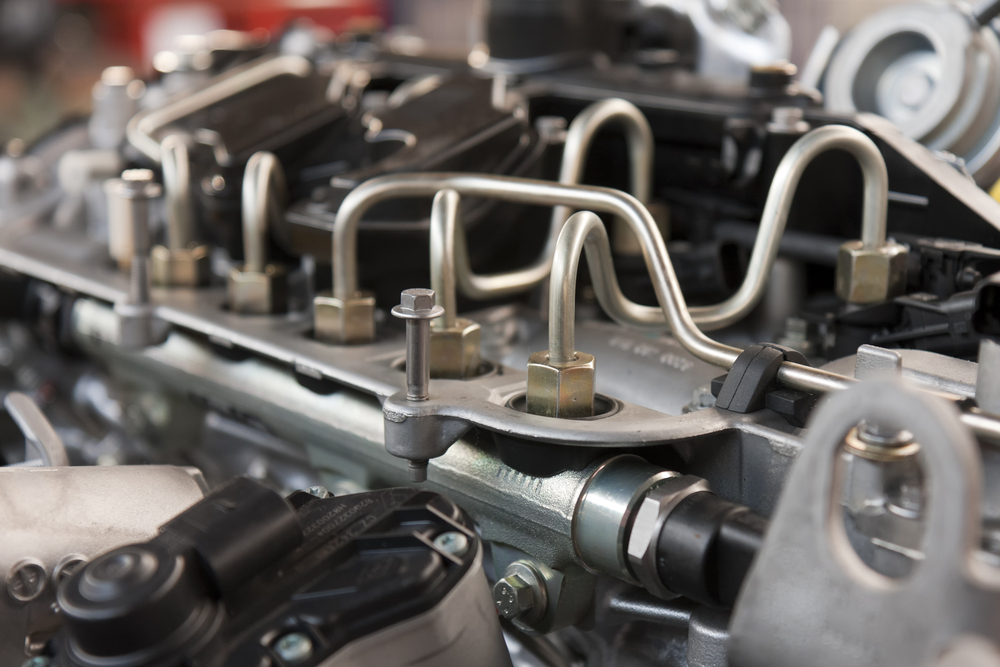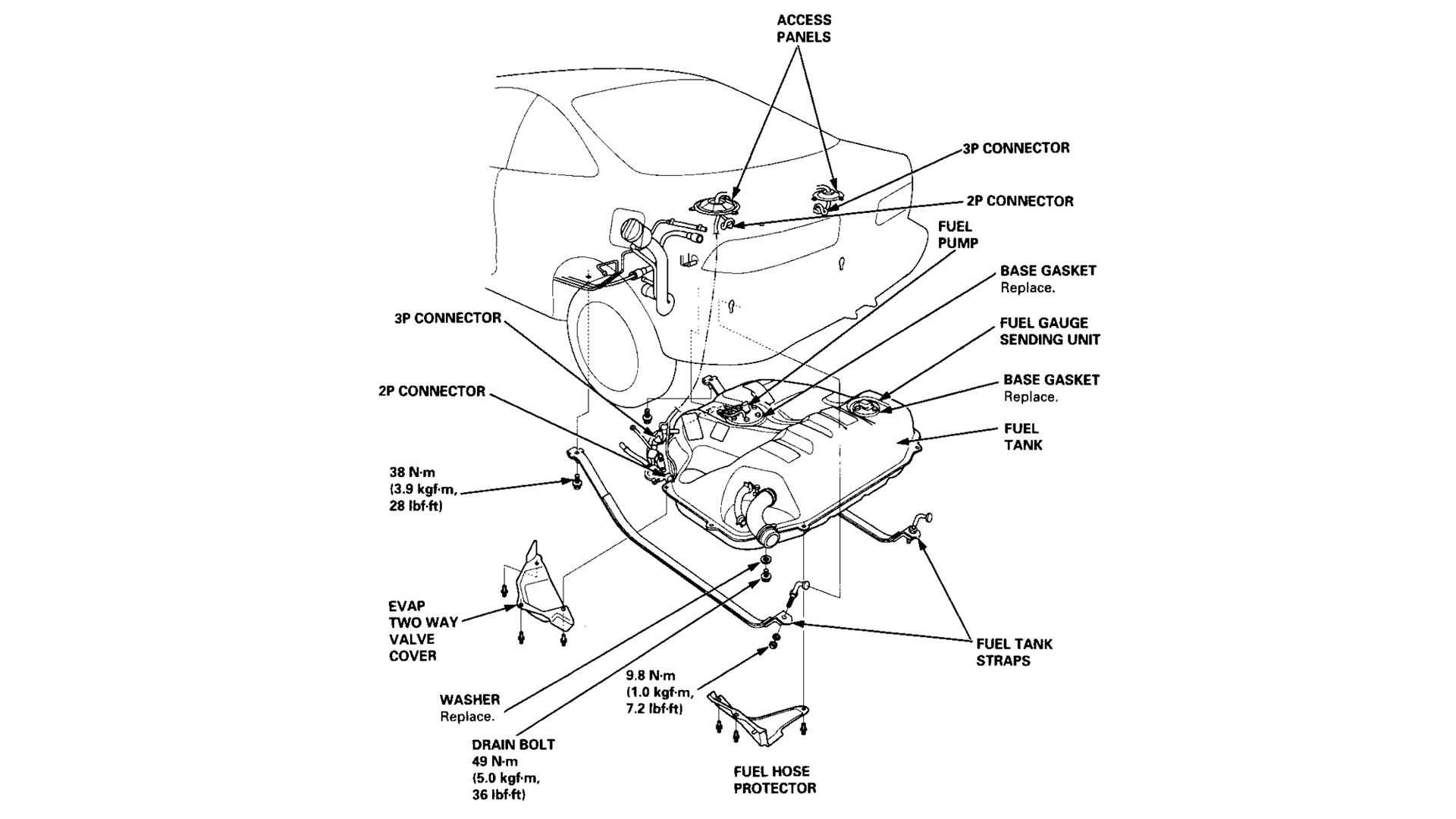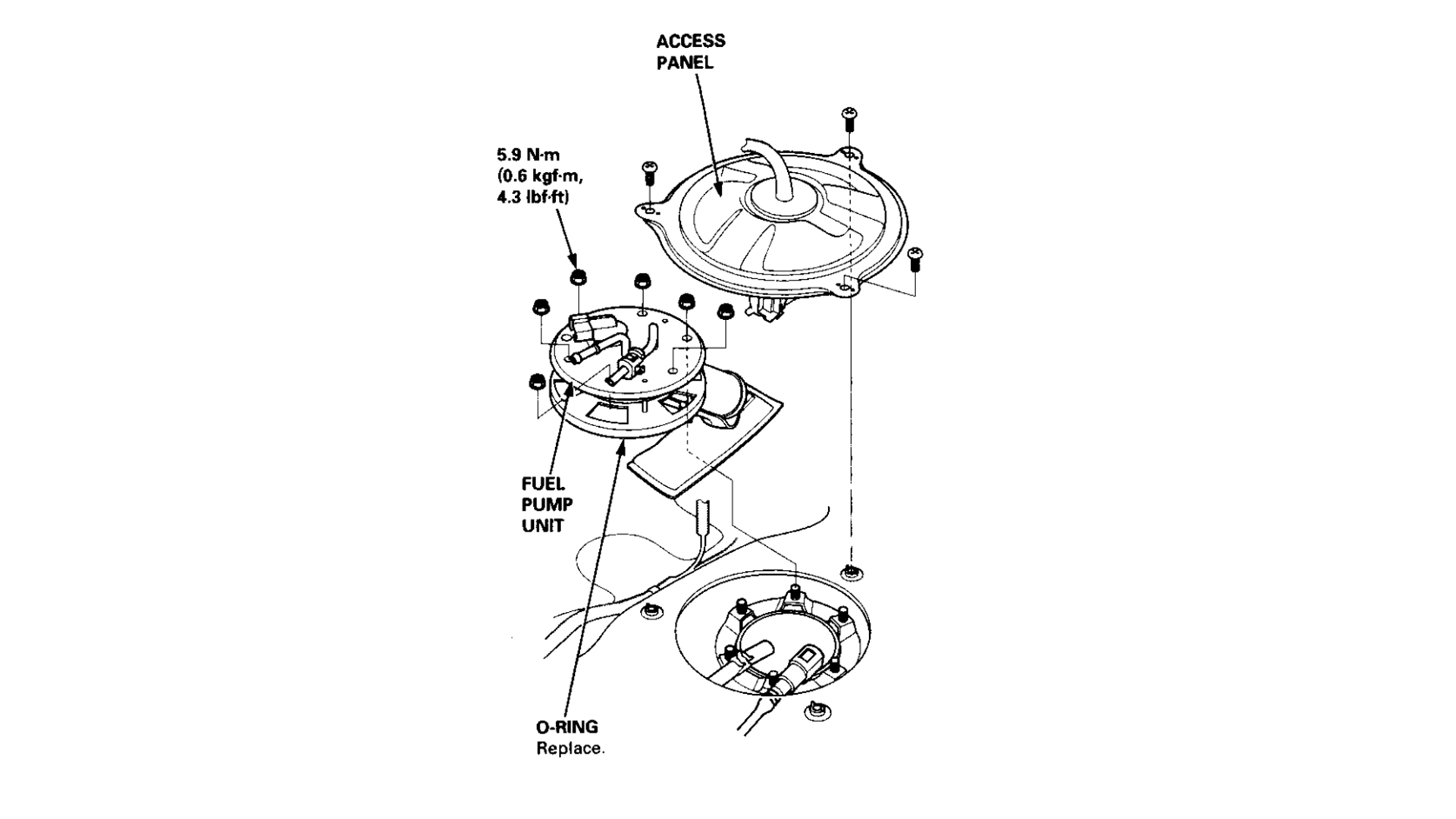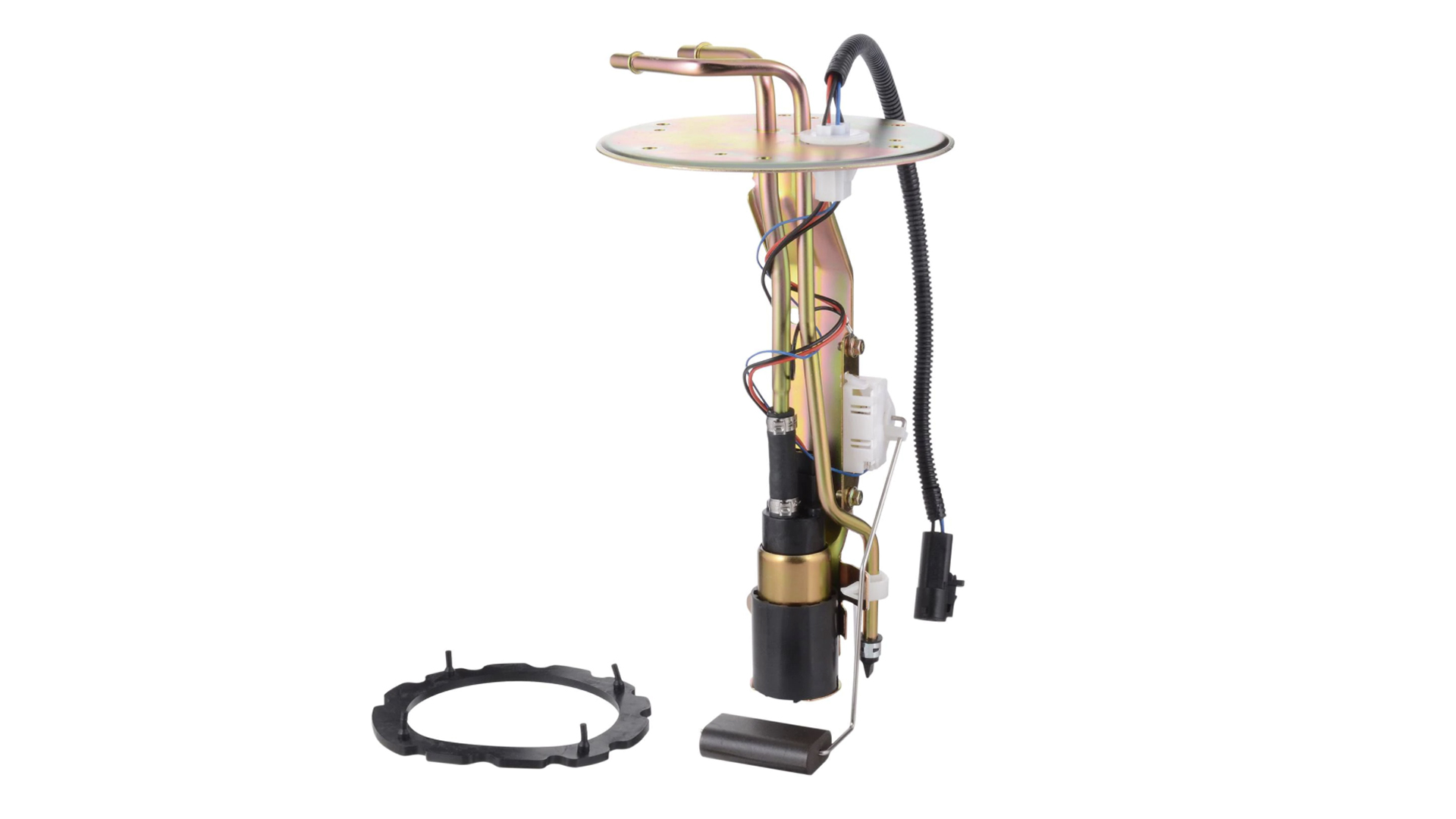

We may earn revenue from the products available on this page and participate in affiliate programs. Learn more ›
A fuel pump’s primary task is to deliver fuel from the storage tank to the engine, and works with multiple other auto parts to accomplish that duty. That can make it difficult to know whether or not it’s failing, unless you know the symptoms of a bad fuel pump.
The most important key to diagnosing a car is listening and understanding how it normally works, runs, and acts on a daily basis. What sounds does it make? What rattles? What are its normal RPMs? With this knowledge base, and an attentive mindset, you’ll notice when the vehicle starts running irregularly.
Realizing the vehicle starts hard, struggles to maintain idle, or flexes less power is the first step in accepting there’s an issue and setting out to fix it. Because so many car parts are interconnected and interdependent, diagnosis is not always a simple exercise. It requires trial and error, and pinpointing the exact source often requires the process of elimination.
That’s what we’re here to discuss, in regards to fuel pumps. Follow The Drive’s thorough guide to bad fuel pump symptoms and figure out what the heck is going on with your ride.
What Is a Fuel Pump?
A fuel pump is a mechanically or electrically controlled mechanism that sends fuel from the gas tank through the fuel filter to the fuel rail. From there, fuel is distributed to the injectors and sprayed into each engine cylinder combustion chamber. On older vehicles, the pump sends fuel to a carburetor.

Types of Fuel Pumps
Automobiles have primarily transitioned away from mechanical pumps on the engine block in old cars to electric pumps inside the gas tank on modern vehicles. Below, we break down the various types of pumps and how they work.
Mechanical fuel pump: A mechanical fuel pump uses positive displacement with a plunger or a diaphragm. In a cyclical action, the pump draws in fuel, traps it, then moves that fuel toward the carb and engine, and repeats the process.
Electric fuel pump: An electronic fuel injection system on modern vehicles requires higher pressure, which is accomplished, in part, by using an electric fuel pump rather than a mechanical module. Here are a few examples of electric pumps:
- In-tank: The majority of new vehicles sold today use fuel pumps that are located inside the fuel tank. This helps protect the module, and the gas helps keep it cool.
- Inline: Much easier to replace than an in-tank pump, an inline pump is located between the gas tank and the engine and is installed within the fuel system track. These are often mounted under the car or in the engine bay.
- Rotary vane: Like mechanical pumps, rotary vane pumps use positive displacement to move the fuel along. Inside a rotary vane pump, a rotor with “paddles” operates off-center within a cavity. Because it is off-center, it creates a crescent-shaped pocket of space that lets the fuel in. The vanes close the small amount of fuel as the rotor moves, and release the fuel once it crosses the outlet valve. Different types of vane pumps include rolling vane, sliding vane, flexible vane, and swinging vane.
- Gerotor: A gerotor pump also uses positive displacement but uses different parts to achieve that method. Within a gerotor pump, there are two interlocking gears, a toothed inner gear and an outer ring gear with smooth curved lobes. The inner gear is offset from the outer gear. Thus, when they rotate, small pockets of fuel can be trapped, pressurized, and released.

How Long Do Fuel Pumps Last?
Fuel pumps are not part of a regular maintenance schedule and only need to be replaced when they fail. Most fuel pumps should last well past 100,000 miles.
Symptoms of a Bad Fuel Pump
Though these symptoms could be sourced to a faulty fuel pump, that is not always the case.
Car Won’t Start
There are a host of issues that could prevent a car from starting, but a lack of fuel is one of the first things to check. If the fuel pump can’t send fuel to the engine, it won’t start.
Related post: How to Jump-Start a Car Without Cables
Sputtering
If the vehicle starts but runs rough and possibly dies, the engine might not be getting enough fuel.
Car Dies Under Heavy Load
If you test your vehicle’s limits, whether that be hard-driving or hauling extra weight and the power cuts off, it might be a symptom the fuel pump cannot keep up with the driver’s demands.
Inconsistent and Unintended Acceleration
If the amount of fuel isn’t properly regulated by the fuel pump, a car could accelerate without input due to an overage of fuel.
Decreased Fuel Efficiency
If you notice your vehicle is suddenly gulping more gas than usual, the fuel pump could be damaged and sending the incorrect amount of fuel.
Increased Engine Temperature
Should the fuel pump fail to provide the proper amount of gas to the engine, the engine could be overstressed, which could cause an irregular rise in temperature.

Fuel Pump Inspection Safety
Working on your car can be dangerous and messy, so here’s exactly what you’ll need to ensure you don’t die, get maimed, or lose an eyeball—hopefully.
- Safety glasses
- Mechanic gloves
- Mechanic coveralls (optional)
- Jack and jack stands if you need to drop the tank
Tools You’ll Need To Access Your Fuel Pump
If you need to replace your fuel pump or change its filter, you’ll need some basic tools to get you there. Most modern cars will have an access panel in the trunk or rear seats, but some older vehicles might require dropping the fuel tank.
- Multimeter
- Socket set
- Screwdriver set
- Hose clamp pliers
- Shop rags/microfiber towels
- Air compressor or canned air
- Container to catch excess fuel
- Siphon pump if you want to drain the fuel
What’s the Easiest Way to Check a Fuel Pump?
A simple method to check if a fuel pump is turning on is to listen for it. Open the fuel door, remove the fuel cap (if your car has one), and turn the car’s ignition to “On.” Put your ear next to the fuel door and listen for a humming noise. If you don’t hear any noticeable action, the pump is likely not working.
Diagnosing a Fuel Pump Problem
Ask yourself these questions to narrow down the source of your issues.
- Does the car have gas?
- Is the fuel pump turning on?
- Is the fuel pump fuse bad?
- Is the fuel pump relay fuse bad?
- Is there a poor connection on the fuel pump?
- Is the fuel filter clogged?
- Are the fuel injectors clogged?
- Is the fuel pressure in range?
- Does the fuel cap have a clean reliable seal?
Related post: How to Clean Your Car’s Fuel Injectors
Tips for Fuel Pump Removal
Accessing and removing a fuel pump can be tedious, so you want to make sure you do it correctly the first time. Use these tips for a successful job.
- Be sure to relieve any pressure in the fuel line.
- Additionally, make sure there is no live electricity near the fuel tank.
- Take a photo of the fuel pump or use a marker to note where it is seated within the tank. This will help you align the pump correctly when you return it to the tank.
- There might be dirt and grime around the top of the pump. Make sure you clean this area thoroughly and eliminate anything that could fall into your tank and cause issues later. Compressed air is a great way to blow things off.
- Many pumps use a locking ring, which might be difficult to remove. Read how to remove it, and be aware that it might have different locking methods, which might be snapped off if you aren’t delicate.
- Inspect your fuel sending unit and float while you’re down there. Read more about fuel sending units in our guide, “Do I Need To Replace My Fuel Gauge If It’s Not Working?“
How Much Does It Cost To Replace a Fuel Pump?
Depending on the car and how old the car is, fuel pump costs range from $50 to several hundreds of dollars.
How to Keep Your Fuel Pump Healthy
You need your fuel to continue pump, pump, pumping it up like Joe Budden, so you don’t want to unintentionally damage the unit. These small steps should help keep it in top shape.
- With in-tank pumps, the gasoline doubles as a coolant. If a tank is regularly low, you are unintentionally allowing your pump to withstand extra heat. Always regularly fill your tank completely every time.
- Change the fuel filter according to the manufacturer’s recommended timeline. A clogged filter could create unintended pressure within the fuel system.
Sometimes You Need a Certified Mechanic
As much as The Drive loves to put the “you” in do-it-yourself, we know that not everyone has the proper tools, a safe workspace, the spare time, or the confidence to tackle major automotive repairs. Sometimes, you just need quality repair work performed by professionals you can trust like our partners, the certified mechanics at Goodyear Tire & Service.
FAQs About Fuel Pumps
You’ve got questions, The Drive has answers!
A: If your fuel pump is going bad or has died, you will likely experience one or more of the many symptoms detailed above. These include trouble starting, sputtering, weak performance, poor fuel economy, poor acceleration, and overheating.
A: Although a bad pump itself doesn’t throw a code, the incorrect amount of fuel sent through a car’s fuel system could trigger sensors that anticipate certain levels and ratios of air and fuel mixtures. So technically, yes, it’s possible to see a code as a result of a bad fuel pump.
A: Because a bad fuel pump could cause unexpected drops in power or even completely shut the vehicle down, we do not recommend driving with the knowledge of a bad fuel pump.
A: Fuel system cleaners do exist, but even in the event that they actually do something (don’t count on it), it will simply be putting the job off to a later time. Get it out of the way and do the full job now before something bad happens later when you aren’t expecting it.
Video
Learn more about fuel tanks in this video about a Holley conversion.

Featured Fuel Pump Products
BETOOLL Pro Fuel Injection Pressure Gauge Kit
ACDelco TP3018 Professional Fuel Filter with Seals
Motorcraft FD-4615 Fuel Filter
Let’s Talk: Comment Below To Talk With The Guides & Gear Editors!
We’re here to be expert guides in everything How To related. Use us, compliment us, yell at us. Comment below, and let’s talk! You can also shout at us on Twitter or Instagram, here are our profiles. Got a question? Got a pro tip? Send us a note: guidesandgear@thedrive.com.